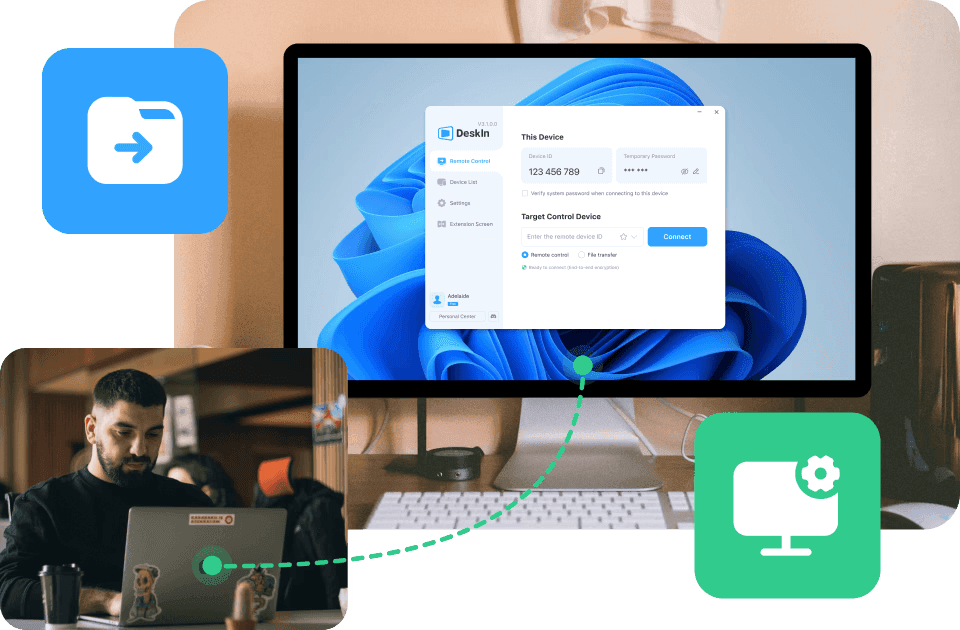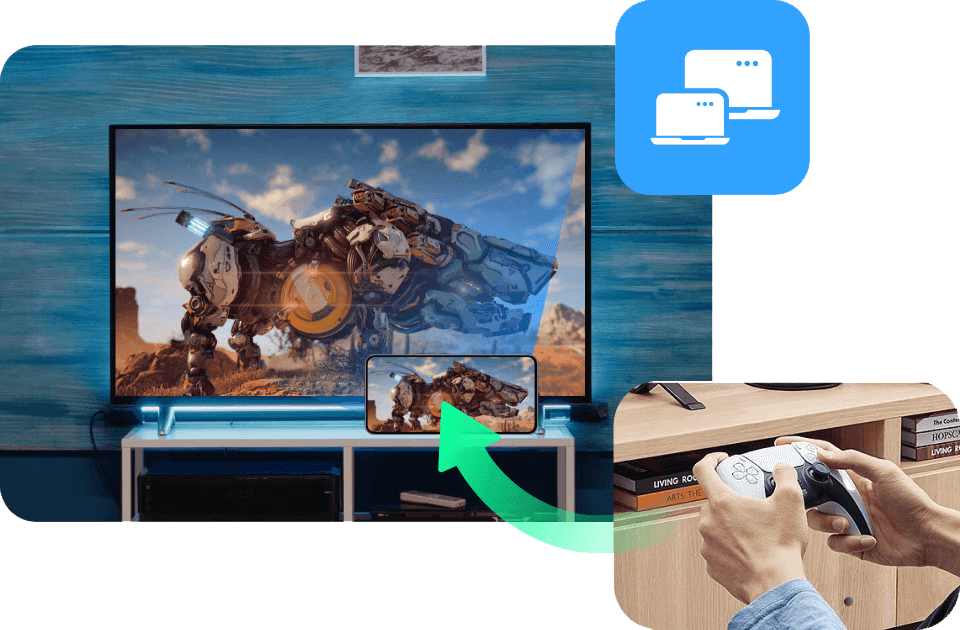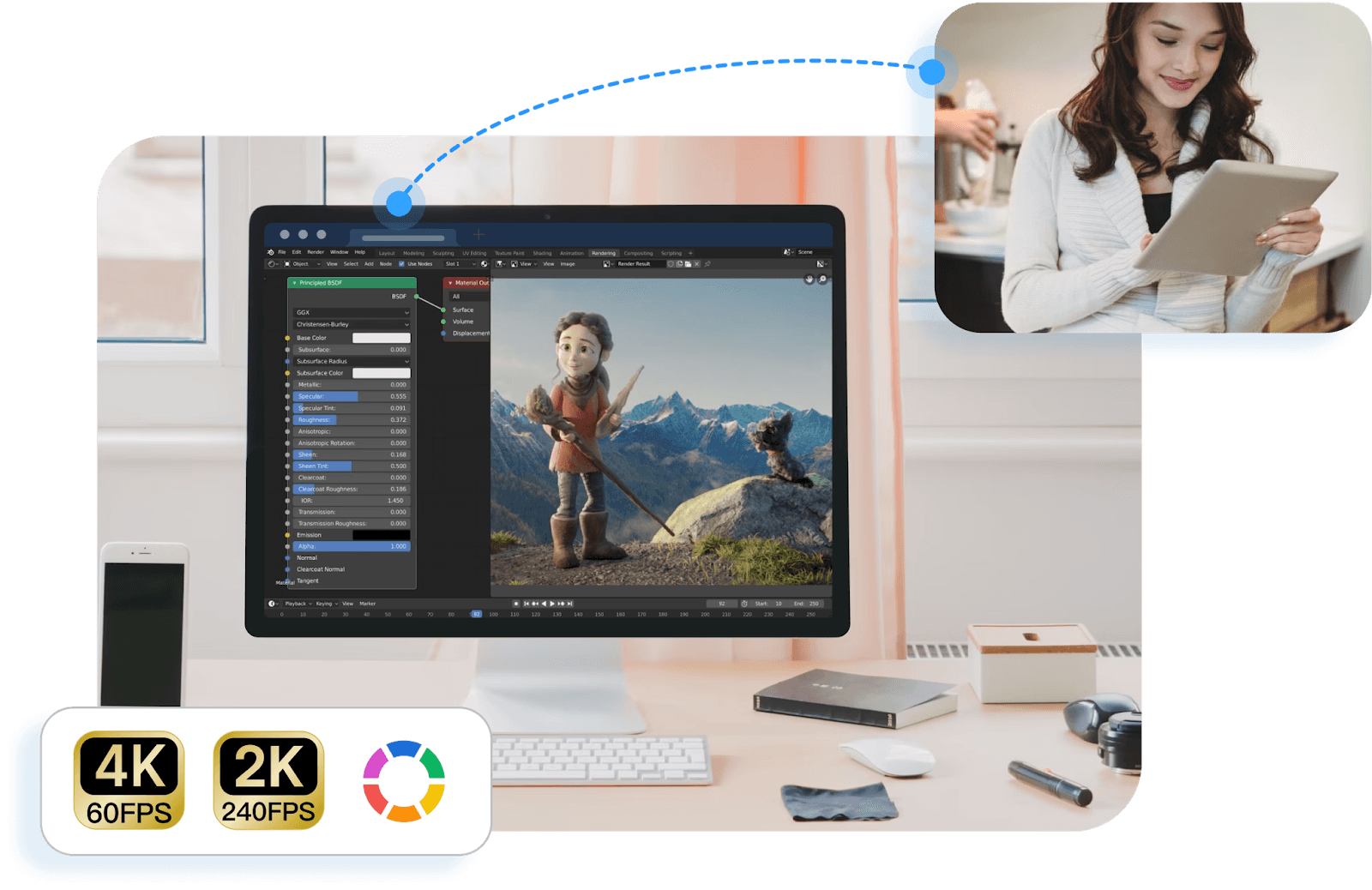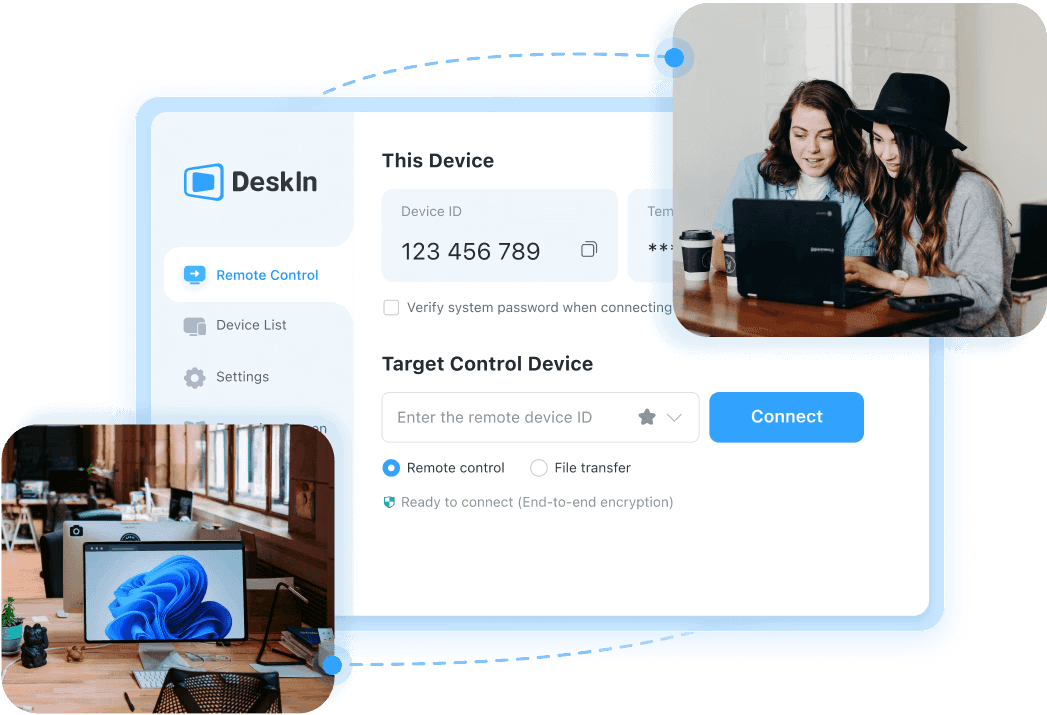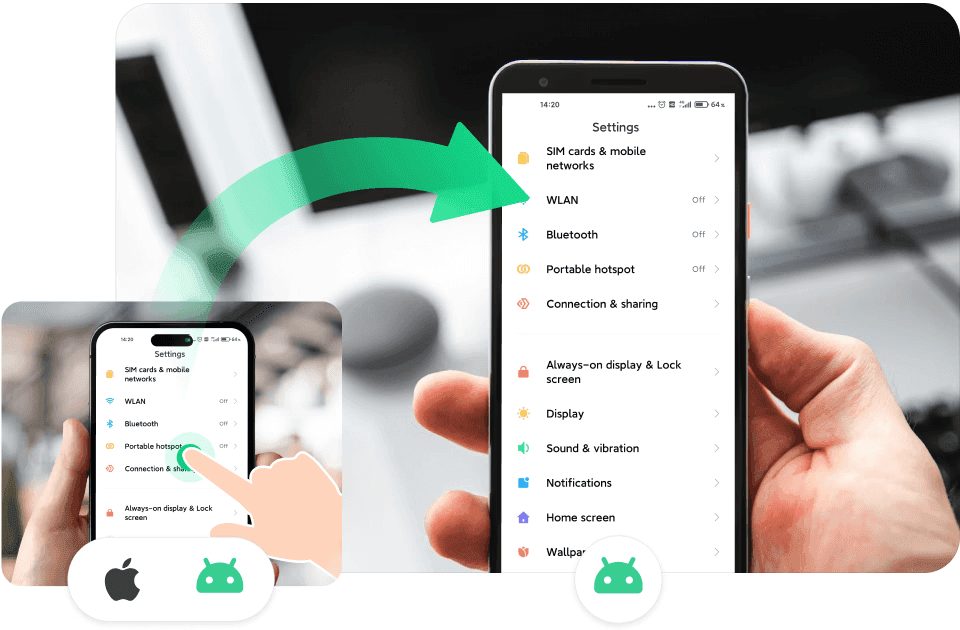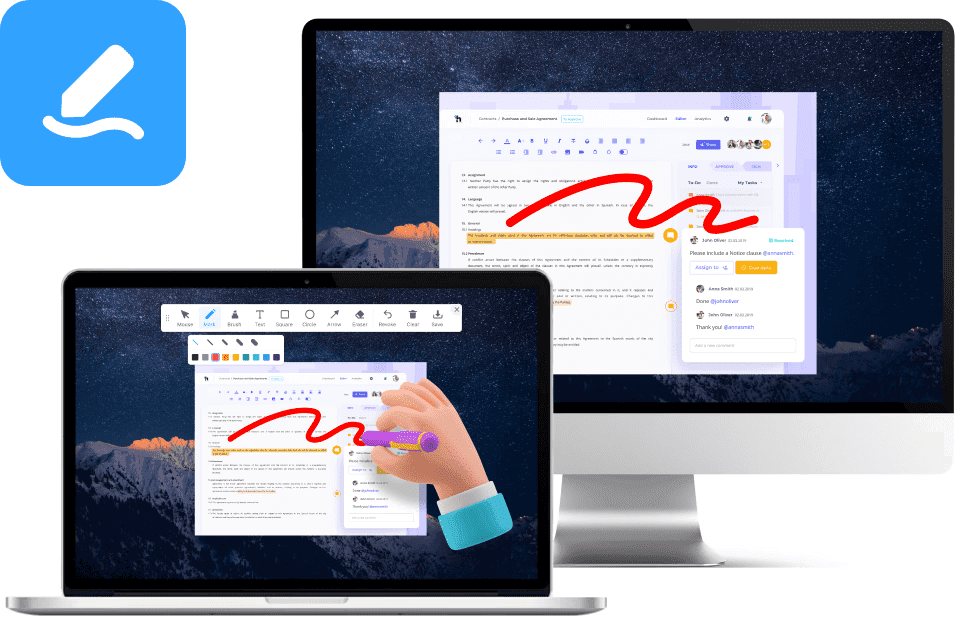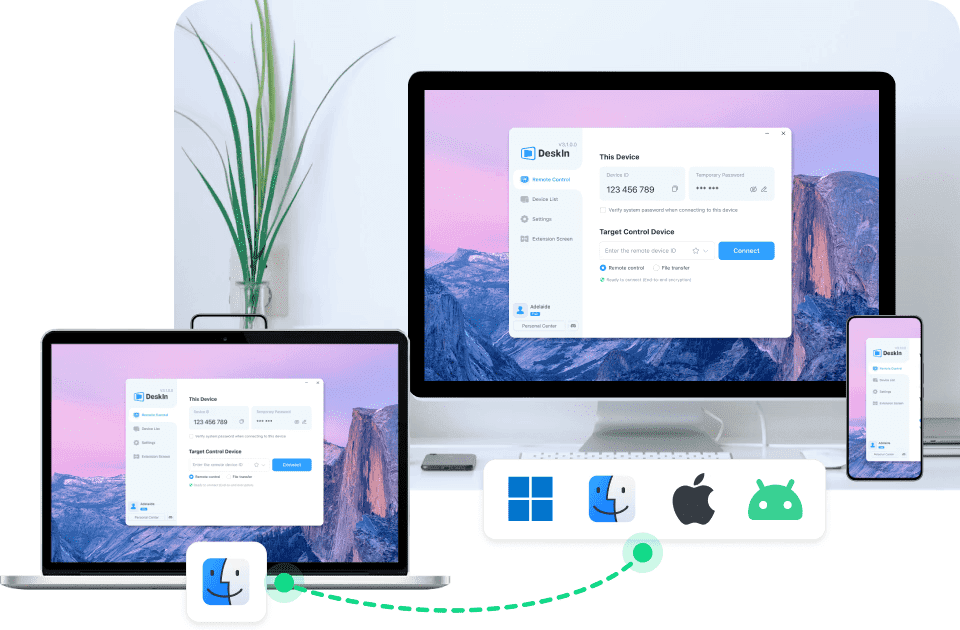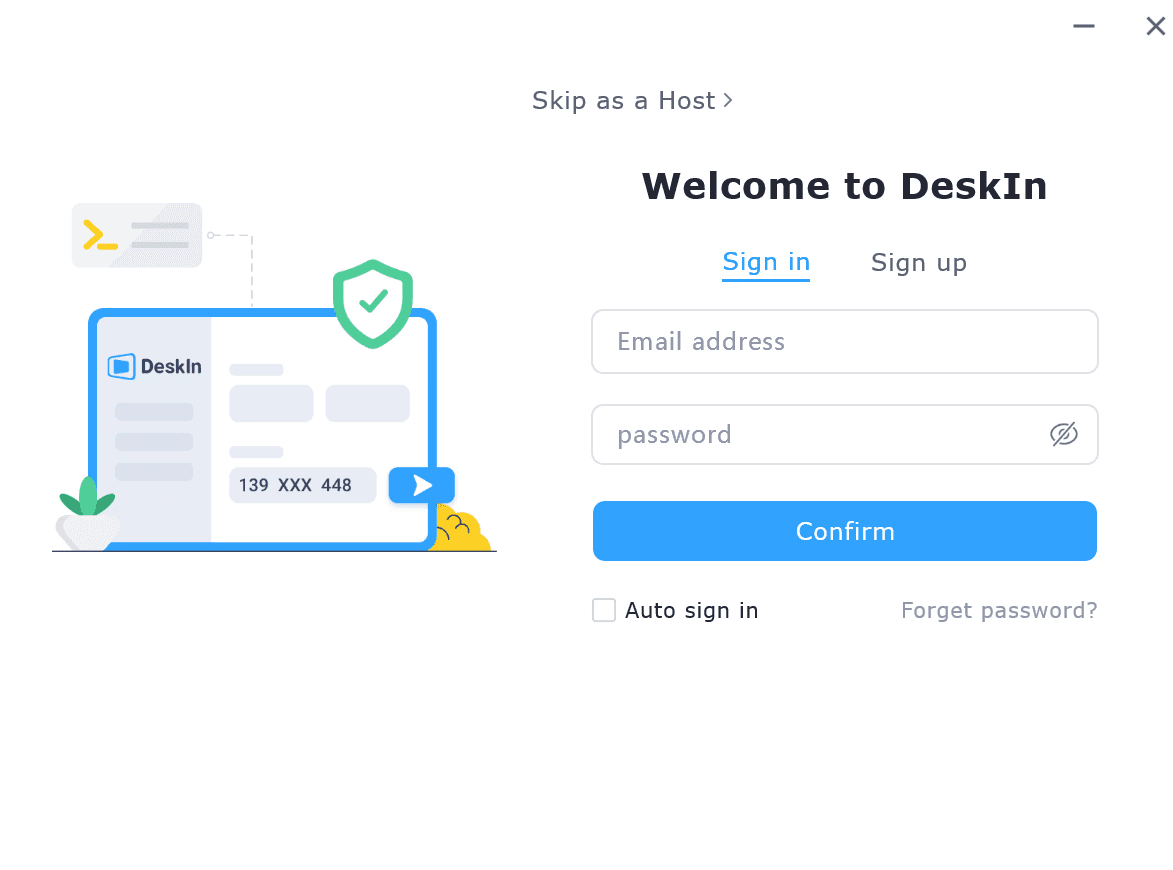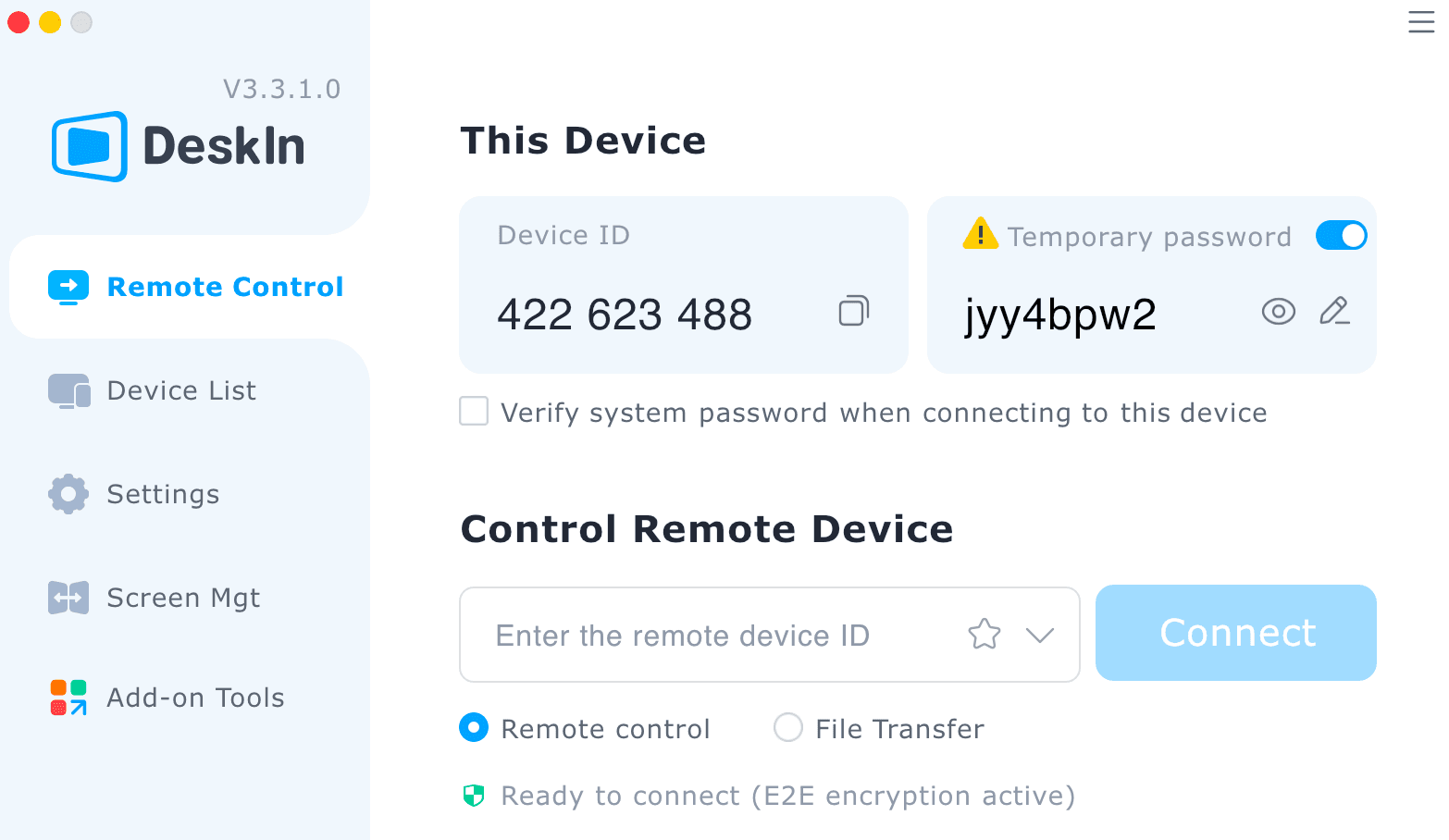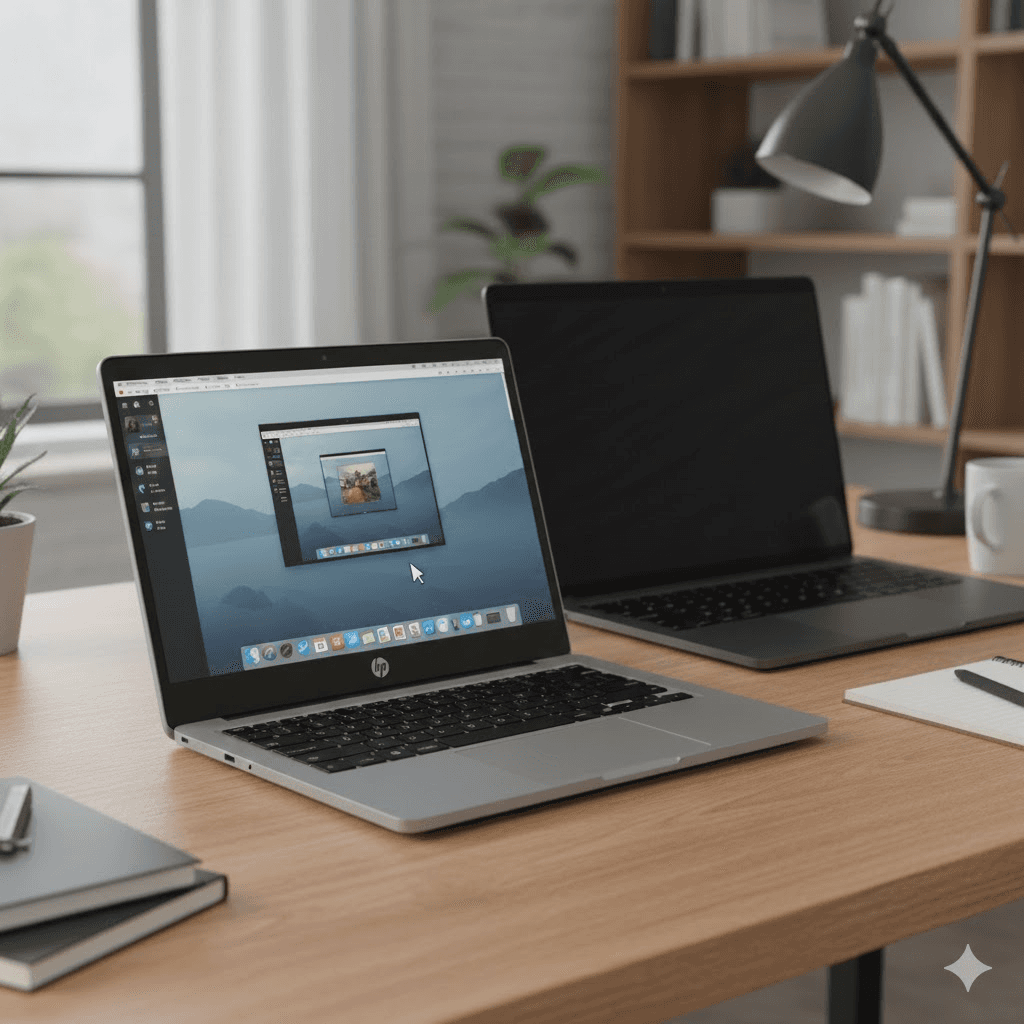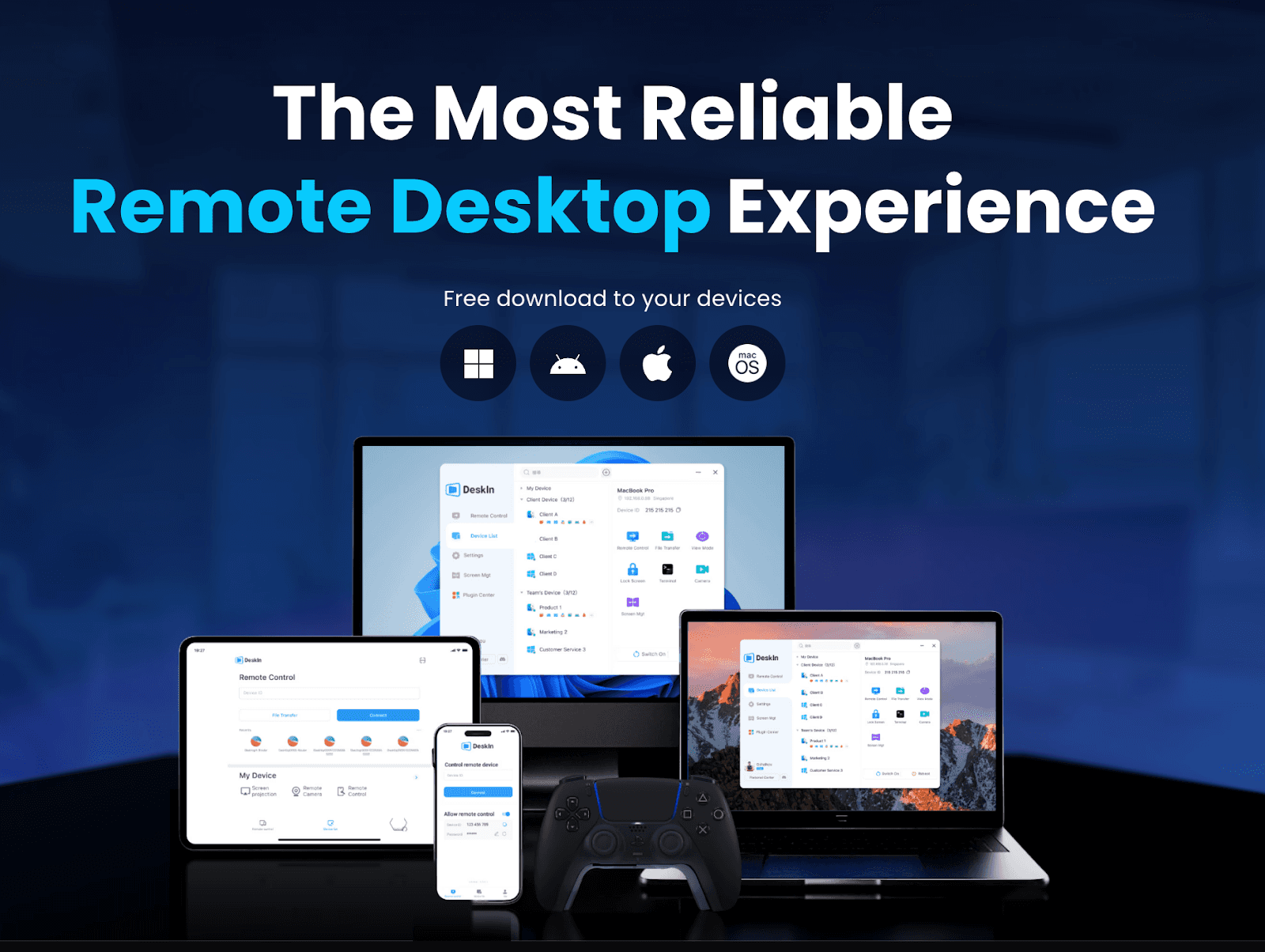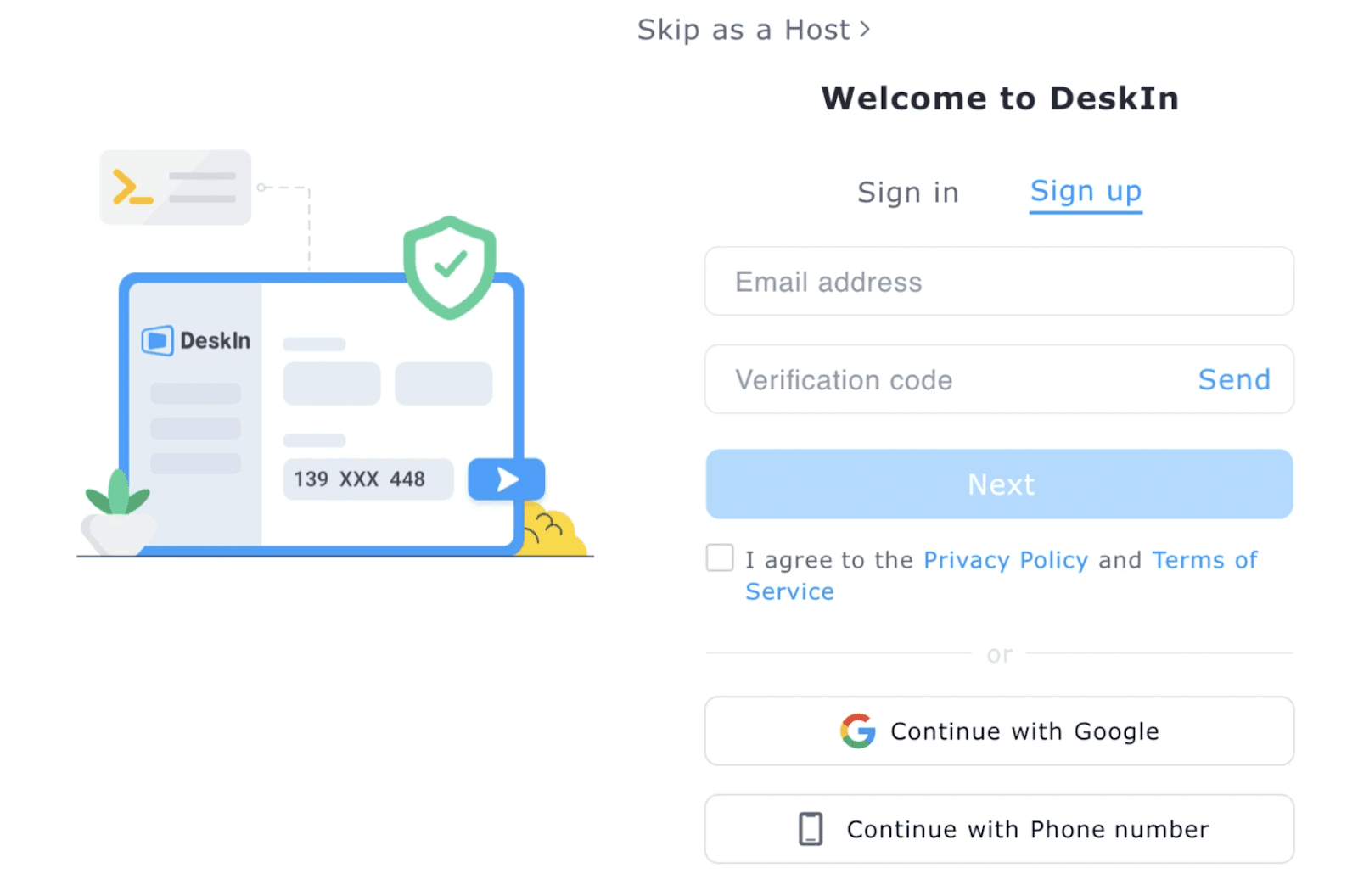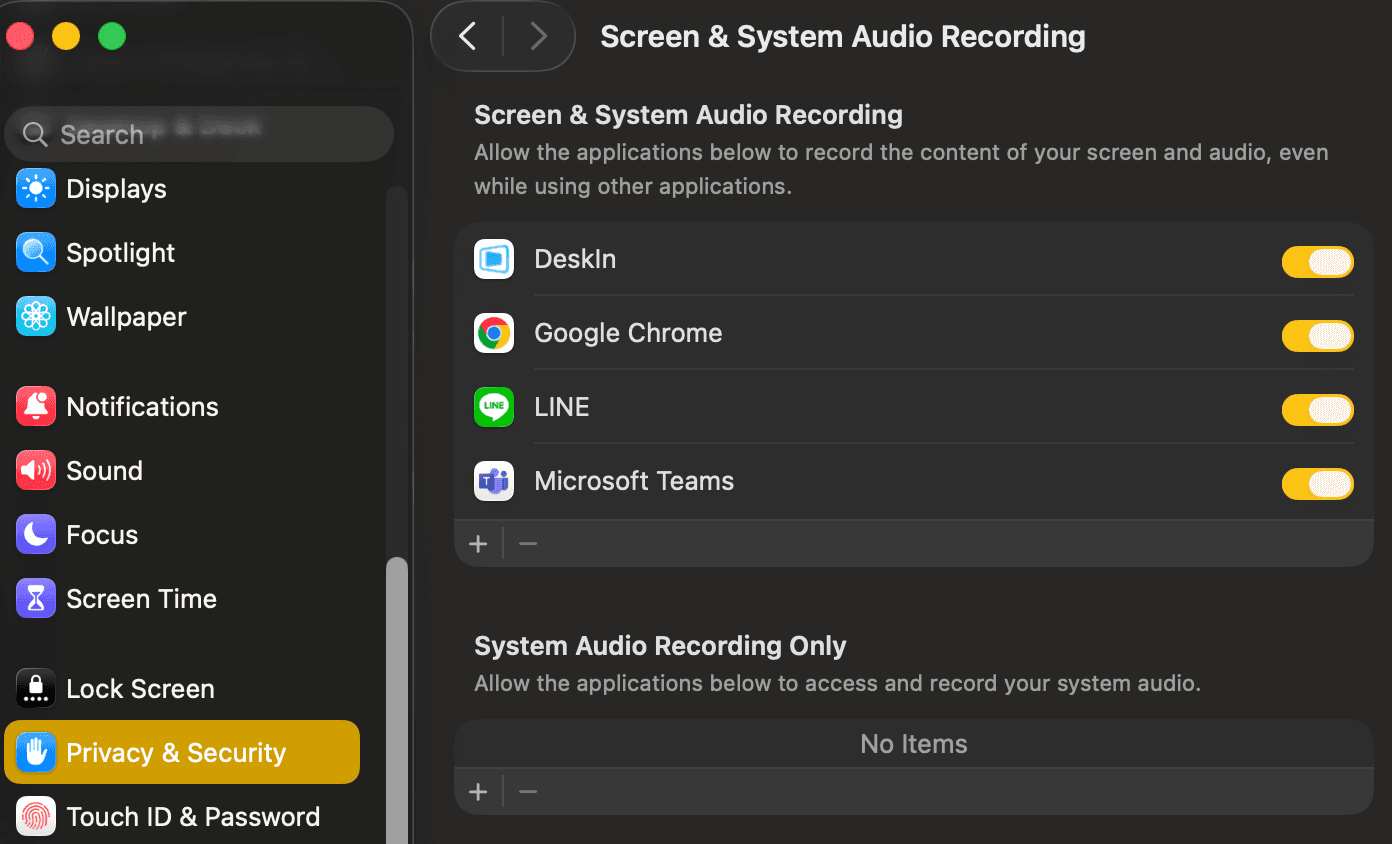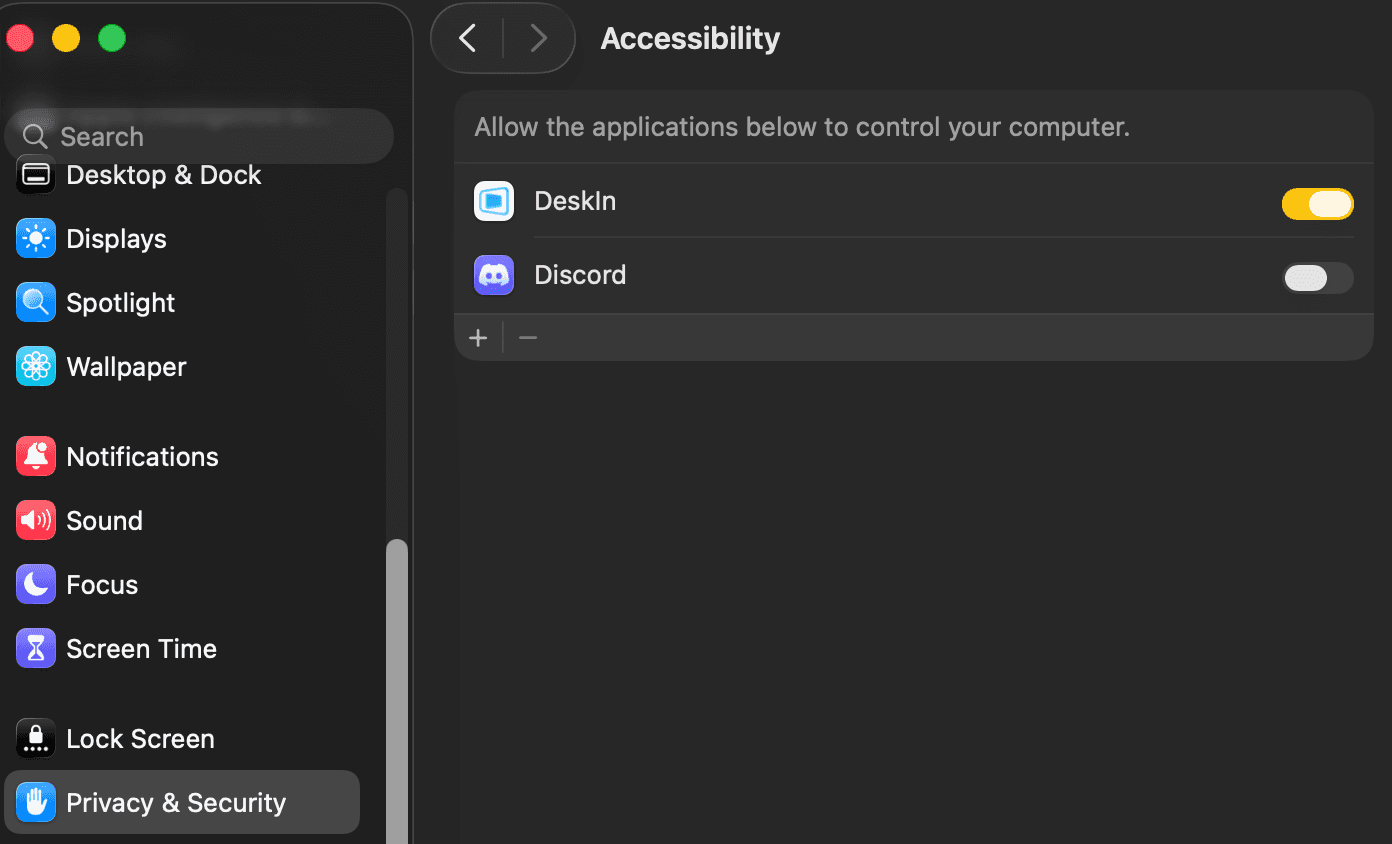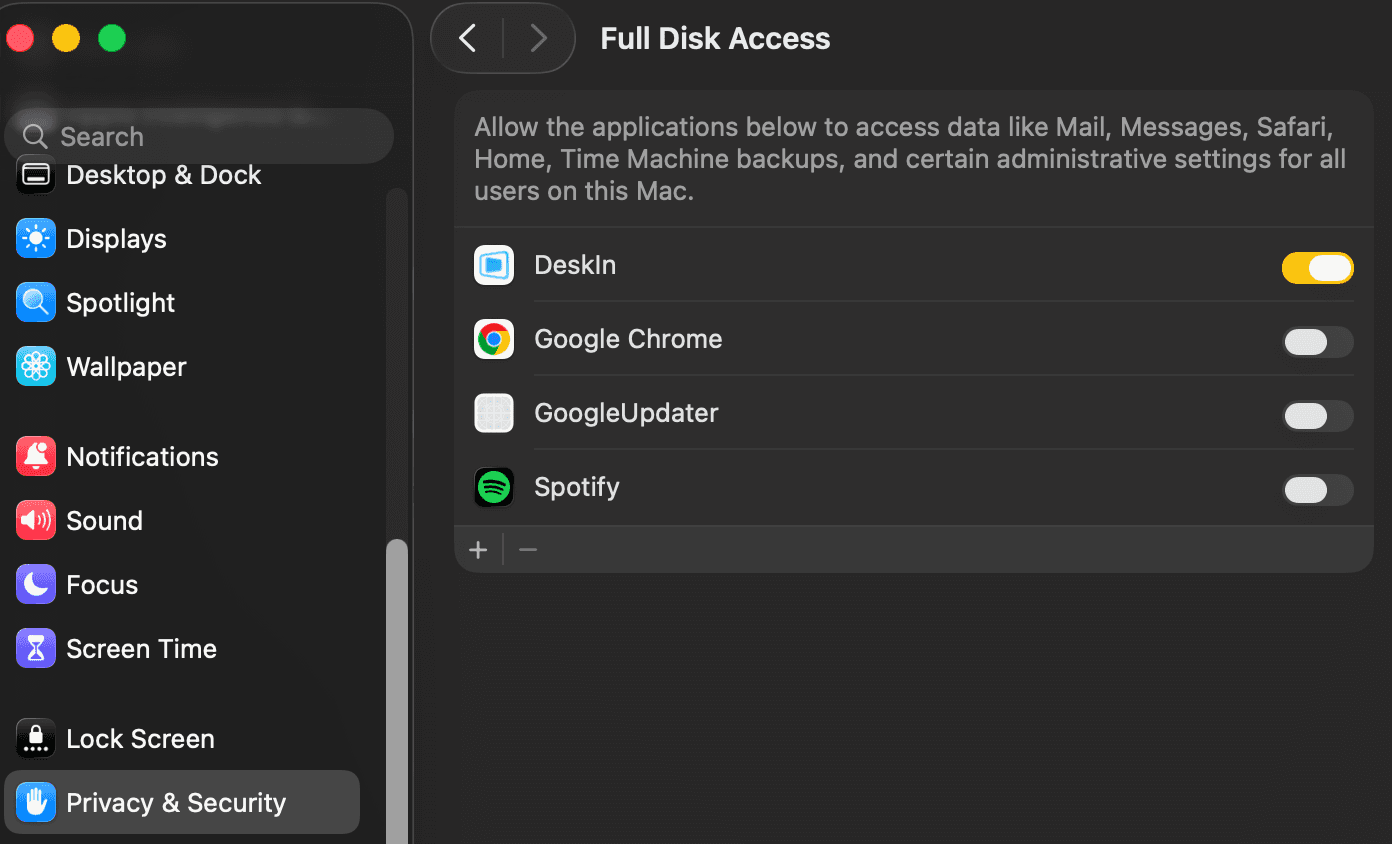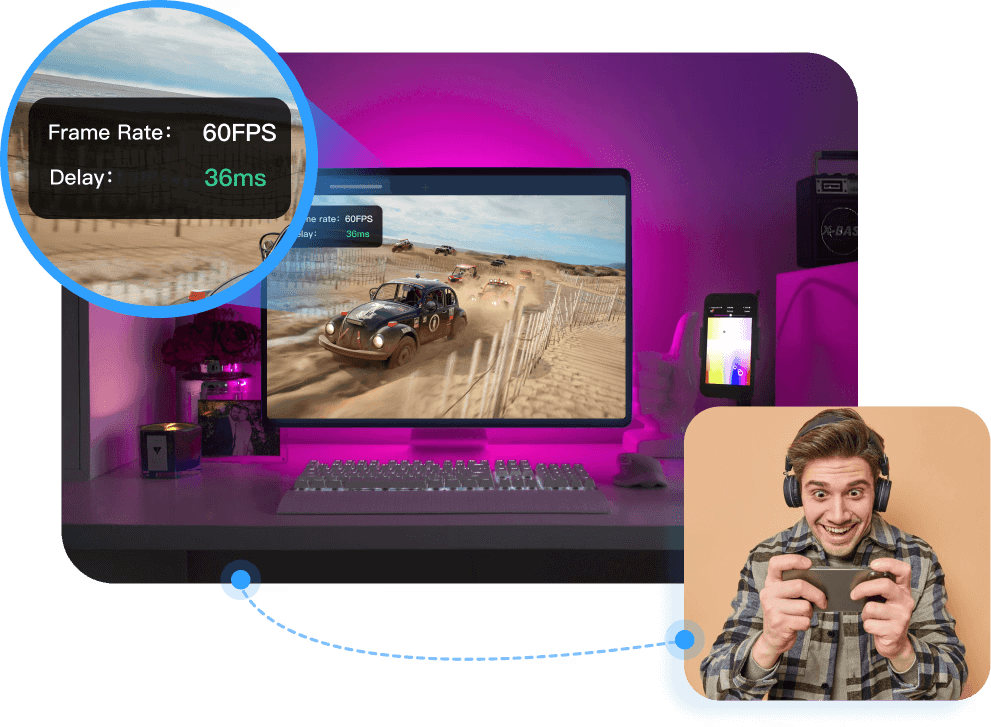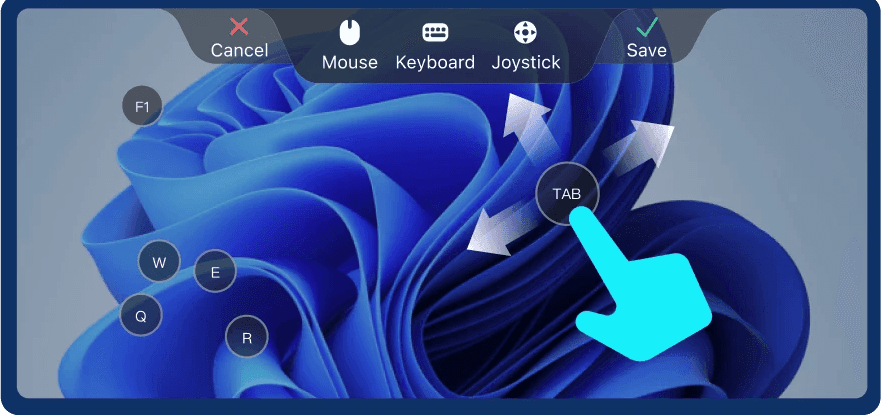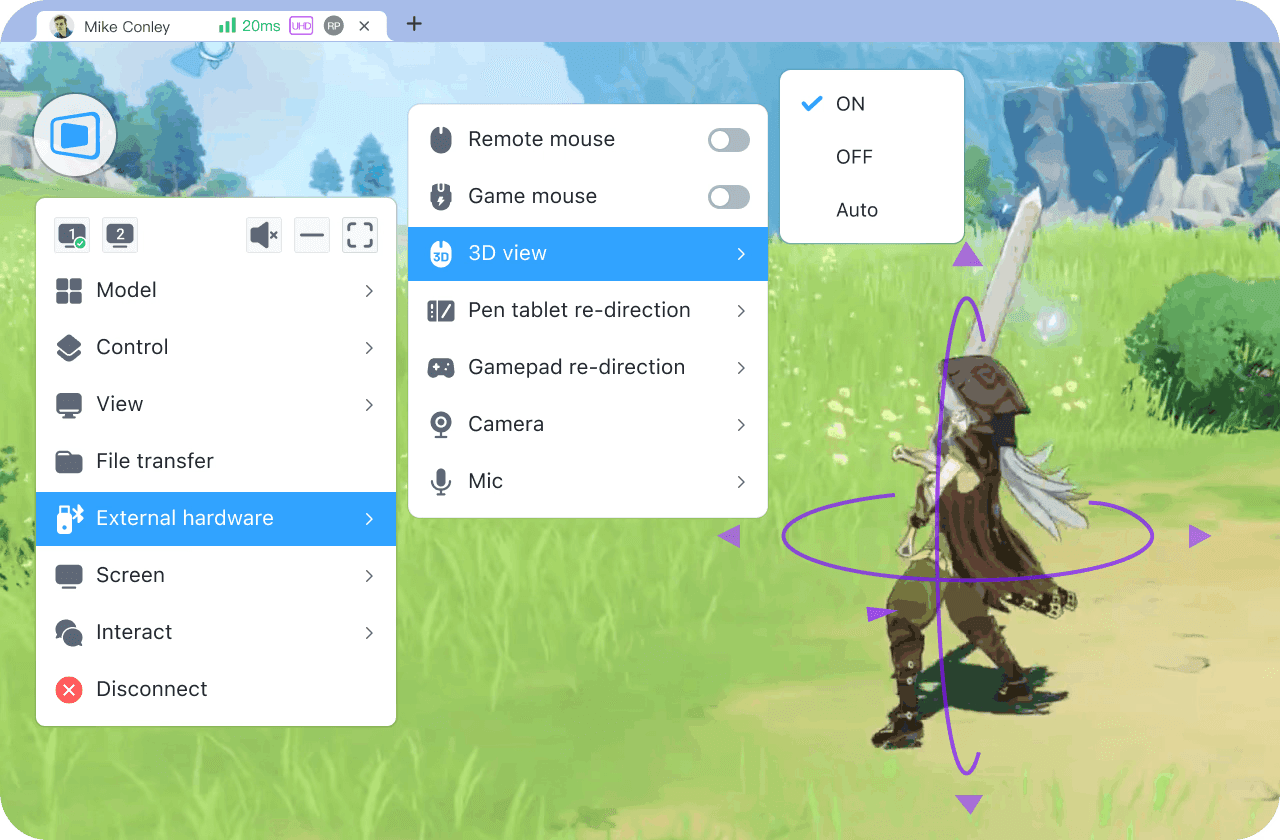Screen extension tech is becoming more and more popular in our daily lives. Here we introduce 5 tools can extend Mac/Windows screen easily.
1. DeskIn Rating ⭐⭐⭐⭐⭐
DeskIn is a one-stop remote desktop software designed for individual users. Besides remote access functions, it provides free screen management features - cross-system extended screen and mirror screen. It supports resolution up to 2K60FPS, and allows you to adjust resolution and frame rate manually. If you are looking for a free extended screen tool, DeskIn is the most recommended one.

Supported Systems: Support extending Windows 10 1903+, MacOS 10.15+ screen wirelessly to Android 6+、iOS10、Mac 10.15+、Windows 10 1903+ devices
Resolution: Up to 2K 60FPS
Limitations: Linux system is not supported yet, and wired screen extension is not supported.
Strengths: No need to manually enter the device ID or use it under the same Wi-Fi. Supports Mac, Windows, iOS, and Android platforms. High-definition image quality and high stability.
Free Trial: Extend screen feature is free to use

2. Spacedesk Rating ⭐⭐⭐⭐
Spacedesk is a completely free screen management tool (Note: commercial use requires a paid license) and has no ads. It allows extending screen to up to 3 screens at the same time, wired and wireless connections, and adjusting parameters such as image quality, resolution, frame rate, etc. The only drawback is that it does not support Mac systems yet.
Supported Systems: Support extending screen from Windows 8+ devices wirelessly, wiredly to Android 4.1+, iOS9.3+, Windows 7+ , HTML5
Resolution: Supports up to 8K 60FPS (The extended device needs to support 8K)
Limitation: Mac system is not supported, and wireless screen expansion is unstable and easy to disconnect. The main device and the device used as an extended screen need to download two different softwares, which is relatively troublesome. Devices need to be on the same Wifi to use the feature.
Free trial: Completely free to use.

3. Duet Display Rating ⭐⭐⭐
Duet is developed by a team of former Apple engineers, providing remote access and screen management functions. The software does not provide a free version. Its remote service and screen management service need to be purchased separately. Its screen management service includes extended screens and mirrored screens, and provides 4 paid versions. You can choose to subscribe annually or purchase a lifetime license. Since there is no free version, the following only introduces the performance of its cheapest paid version.
Supported Systems: Supports wired or wireless extension from MacOS10.13+, Windows 10+ to iOS 7.0+ , Android 7+, MacOS10.9+, Windows 10+ devices
Resolution: Supports up to 60FPS, supported resolution is not declared
Limitations: No free version
Free trial: 7 days trial
Paid plan: US $48~$72 per year

4. GlideX Rating ⭐⭐⭐
GlideX is a remote desktop software developed by ASUS, but in addition to ASUS's own products, it also supports use on other computers. The software provides rich functionalities, but many of them require purchase to unlock, and the free version has many restrictions. The free version only supports screen extension and projection from Windows to Android and iOS.
Supported Systems: Only supports extending screen from Windows 10 1090+ devices to Android 9+, iOS14+ version devices.
Resolution: Up to 720P 30FPS
Limitations: Has ads, does not support mac system-related functions, and does not support dynamically adjusted streaming quality.
Free trial: Register for ASUS, ROG laptops and desktops to enjoy a 1-year trial of "Glidex Professional Edition"
Paid plan: US $11.88~US $71.88 per year

5. LetsView Rating ⭐⭐
LetsView is a projection tool and you can pay to unlock the extended screen feature. It can be used without logging in, but the connection is a bit unstable. When using it on a Windows system, the editor often encounters the problem of being unable to successfully expand the screen and crashing.
Supported Systems: Supports wireless screen expansion from Windows 10+ to Android 5+ and iOS 9.0+ devices
Resolution: The cheapest plan supports up to 720P 30FPS
Limitations: It requires payment to unlock and cannot expand the Mac screen. When using it on Mac, you need to turn off the "Airplay" feature first and the 2 devices need to be on the same network to use the extended screen feature.
Free trial: No
Paid plan: US$ 29.99~US$ 39.99 per year

Conclusion
The above introduces 5 software that can extend the Mac and Windows screen to mobile devices: DeskIn, Spacedesk, GlideX, Duet display, and Letsview. Although they all provide screen extension functions, the supported systems, prices, and resolutions are different. If you are looking for an extension tool that is completely free, can be extended wirelessly, supports both Mac and Windows and has good performance, DeskIn is definitely your best choice. Download and give it a try!

Screen extension tech is becoming more and more popular in our daily lives. Here we introduce 5 tools can extend Mac/Windows screen easily.
1. DeskIn Rating ⭐⭐⭐⭐⭐
DeskIn is a one-stop remote desktop software designed for individual users. Besides remote access functions, it provides free screen management features - cross-system extended screen and mirror screen. It supports resolution up to 2K60FPS, and allows you to adjust resolution and frame rate manually. If you are looking for a free extended screen tool, DeskIn is the most recommended one.

Supported Systems: Support extending Windows 10 1903+, MacOS 10.15+ screen wirelessly to Android 6+、iOS10、Mac 10.15+、Windows 10 1903+ devices
Resolution: Up to 2K 60FPS
Limitations: Linux system is not supported yet, and wired screen extension is not supported.
Strengths: No need to manually enter the device ID or use it under the same Wi-Fi. Supports Mac, Windows, iOS, and Android platforms. High-definition image quality and high stability.
Free Trial: Extend screen feature is free to use

2. Spacedesk Rating ⭐⭐⭐⭐
Spacedesk is a completely free screen management tool (Note: commercial use requires a paid license) and has no ads. It allows extending screen to up to 3 screens at the same time, wired and wireless connections, and adjusting parameters such as image quality, resolution, frame rate, etc. The only drawback is that it does not support Mac systems yet.
Supported Systems: Support extending screen from Windows 8+ devices wirelessly, wiredly to Android 4.1+, iOS9.3+, Windows 7+ , HTML5
Resolution: Supports up to 8K 60FPS (The extended device needs to support 8K)
Limitation: Mac system is not supported, and wireless screen expansion is unstable and easy to disconnect. The main device and the device used as an extended screen need to download two different softwares, which is relatively troublesome. Devices need to be on the same Wifi to use the feature.
Free trial: Completely free to use.

3. Duet Display Rating ⭐⭐⭐
Duet is developed by a team of former Apple engineers, providing remote access and screen management functions. The software does not provide a free version. Its remote service and screen management service need to be purchased separately. Its screen management service includes extended screens and mirrored screens, and provides 4 paid versions. You can choose to subscribe annually or purchase a lifetime license. Since there is no free version, the following only introduces the performance of its cheapest paid version.
Supported Systems: Supports wired or wireless extension from MacOS10.13+, Windows 10+ to iOS 7.0+ , Android 7+, MacOS10.9+, Windows 10+ devices
Resolution: Supports up to 60FPS, supported resolution is not declared
Limitations: No free version
Free trial: 7 days trial
Paid plan: US $48~$72 per year

4. GlideX Rating ⭐⭐⭐
GlideX is a remote desktop software developed by ASUS, but in addition to ASUS's own products, it also supports use on other computers. The software provides rich functionalities, but many of them require purchase to unlock, and the free version has many restrictions. The free version only supports screen extension and projection from Windows to Android and iOS.
Supported Systems: Only supports extending screen from Windows 10 1090+ devices to Android 9+, iOS14+ version devices.
Resolution: Up to 720P 30FPS
Limitations: Has ads, does not support mac system-related functions, and does not support dynamically adjusted streaming quality.
Free trial: Register for ASUS, ROG laptops and desktops to enjoy a 1-year trial of "Glidex Professional Edition"
Paid plan: US $11.88~US $71.88 per year

5. LetsView Rating ⭐⭐
LetsView is a projection tool and you can pay to unlock the extended screen feature. It can be used without logging in, but the connection is a bit unstable. When using it on a Windows system, the editor often encounters the problem of being unable to successfully expand the screen and crashing.
Supported Systems: Supports wireless screen expansion from Windows 10+ to Android 5+ and iOS 9.0+ devices
Resolution: The cheapest plan supports up to 720P 30FPS
Limitations: It requires payment to unlock and cannot expand the Mac screen. When using it on Mac, you need to turn off the "Airplay" feature first and the 2 devices need to be on the same network to use the extended screen feature.
Free trial: No
Paid plan: US$ 29.99~US$ 39.99 per year

Conclusion
The above introduces 5 software that can extend the Mac and Windows screen to mobile devices: DeskIn, Spacedesk, GlideX, Duet display, and Letsview. Although they all provide screen extension functions, the supported systems, prices, and resolutions are different. If you are looking for an extension tool that is completely free, can be extended wirelessly, supports both Mac and Windows and has good performance, DeskIn is definitely your best choice. Download and give it a try!







